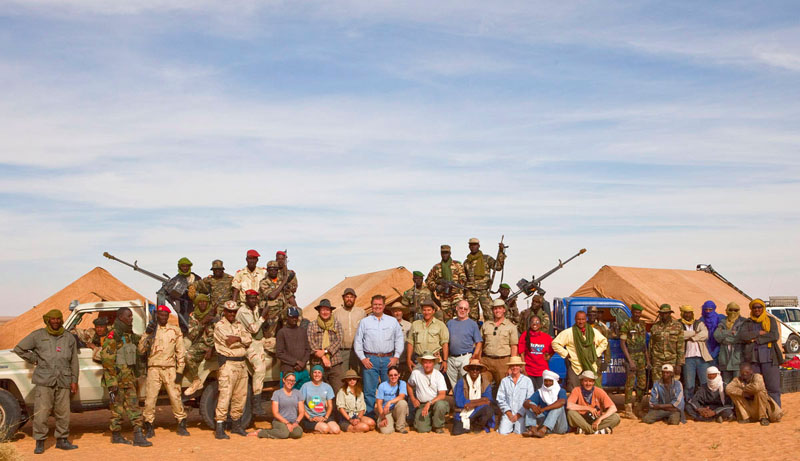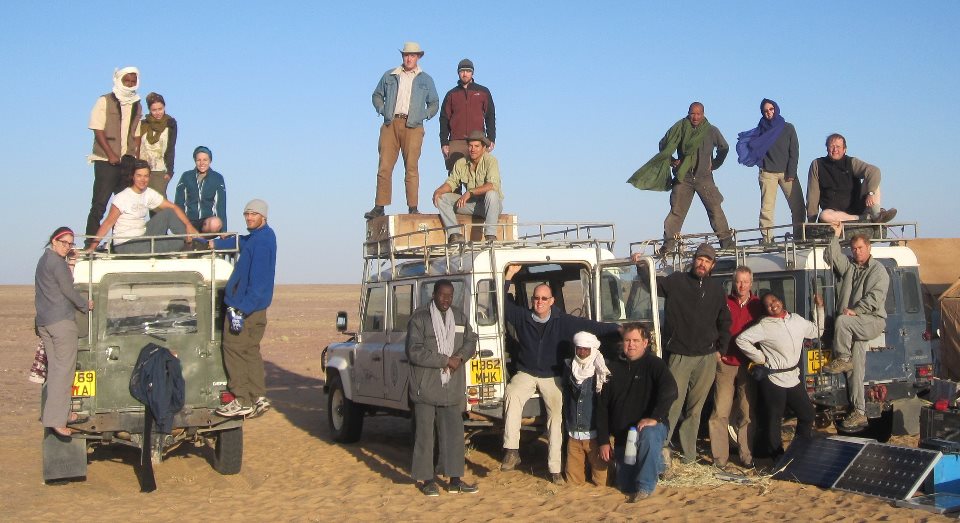Niger 2011
Time Lapse of the drive from Tahoua to Agadez, Niger by Nels Peterson
Highlights
From November 19 – December 23, 2011, Dr. Paul Sereno led an archaeological and paleontological expedition to Niger’s Sahara desert, returning to Gobero, the site of the People of the Green Sahara. The international expedition team included researches from across the United States, Europe, and Africa.
Gobero is arguably the single-most important Early-to mid-Holocene site in the Sahara, predating the Egyptian mummies. Two physically and culturally distinct populations are present among the burials — Early Holocene Kiffians and mid Holocene Tenereans. Radiometric dating of the human occupants, bone and ceramic artifacts and sediments of the site has established a chronology for a dramatic and nearly unparalleled range of cultural activities.
About Gobero
The recently discovered burial complex at Gobero in Niger has provided a unique window onto the successive peoples and cultures that once lived lakeside, when the Sahara Desert was considerably greener than today, some 10,000 to 5,000 years ago. The quality and number of burials, artifacts, faunal remains and the duration of time preserved at Gobero have no match anywhere else in the Sahara. Our initial work, summarized in Sereno et al. (2008) provides an outline and temporal framework for the site complex.
The present project aims to analyze new lines of evidence in several laboratories and finish the field work at the site in Niger. Laboratory analysis includes CT scanning of skeletons to better visualize burial postures and bone wounds, analyzing dental calculus for clues regarding died, and sampling teeth (dentine) for ancient DNA to better understand where Gobero’s inhabitants originated. Field work aims to collect the remaining skeletons, ceramic vessels and artifacts we have mapped at the site and laser scan the area to digitally refill Paleolake Gobero.

